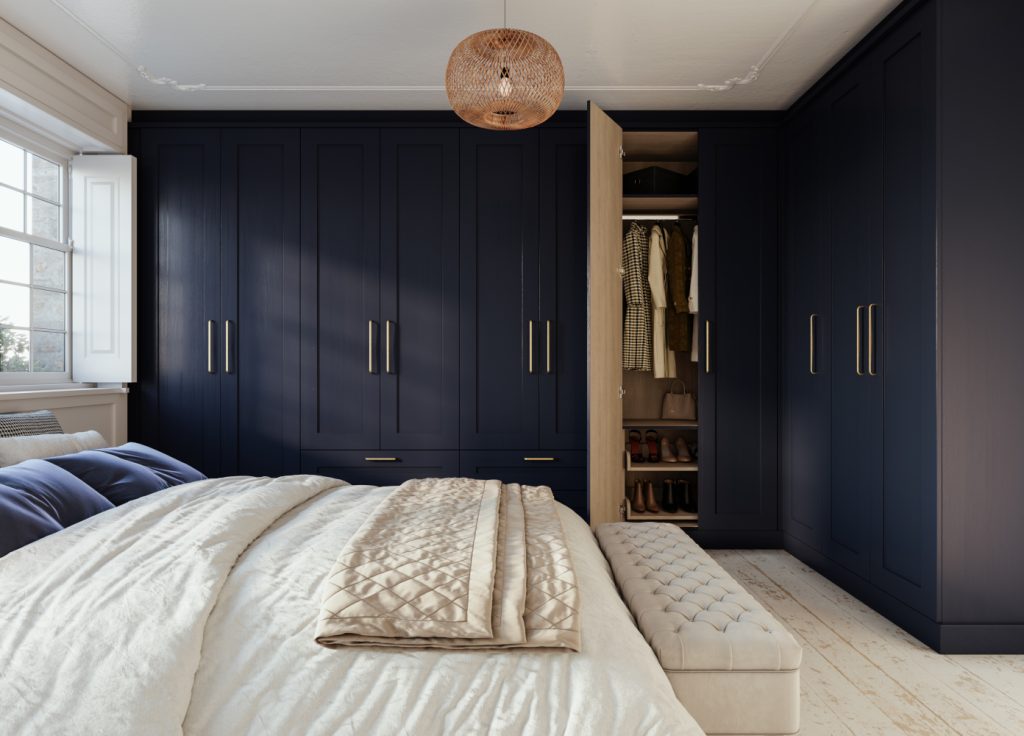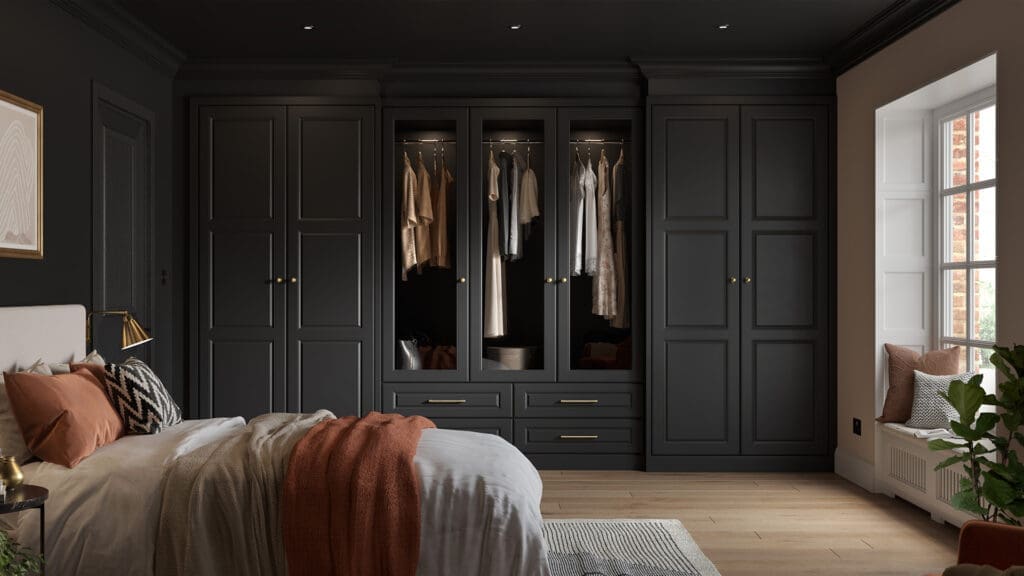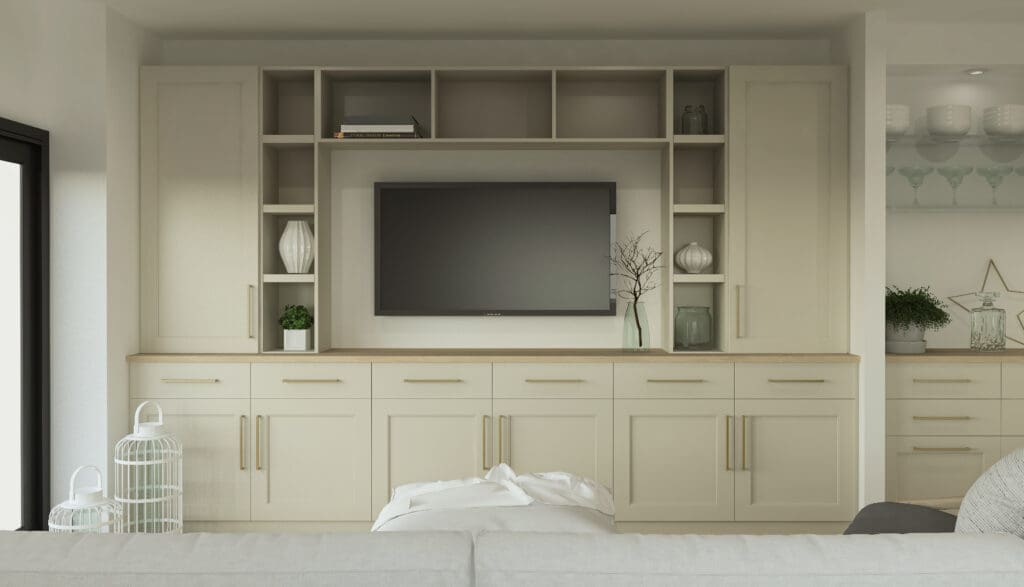Minimalist Interior Design: Creating a Sleek and Functional Space

Estimated reading time 6 minutes
Minimalist interior design has gained widespread popularity thanks to its ability to create serene, functional spaces that are both aesthetically pleasing and efficient. By focusing on simplicity and eliminating clutter, minimalist design creates a sense of calm and order, transforming your home into a peaceful sanctuary.
Embracing minimalist principles can help you create a space that not only looks beautiful but also enhances your day-to-day living. In this blog, we’ll explore the key elements of minimalist interior design and provide tips for incorporating this timeless style into your home.
What is minimalist interior design?
Minimalist interior design focuses on simplicity, functionality, and the removal of excess. It embraces the idea that less is more, opting for clean lines, neutral colours, and a lack of clutter. The goal is to create spaces that feel calm, organised, and visually appealing without overwhelming the senses. Every element within the design will serve a purpose, from furniture pieces to decoration, ensuring that the room feels both purposeful and spacious.
What are the key elements of minimalist interior design?
The key elements that define minimalist interior design include:
Clean lines and simple shapes
Minimalist spaces rely on sharp, clean lines with simple, geometric shapes. The furniture, fixtures, and architectural elements all feature sleek, straightforward designs, avoiding unnecessary embellishments. The result is a space that feels calm, streamlined and uncluttered.
Neutral colour palettes
Neutral tones such as whites, greys, blacks, and soft beiges dominate minimalist interiors. These colours create a calm, cohesive atmosphere while allowing the natural light to flow freely throughout the room. Occasionally, accent colours are introduced in subtle ways, such as through artwork or small decorative pieces.
Functionality over decoration
In minimalist design, functionality takes precedence over decoration. Every item in the room serves a purpose, whether it’s a piece of furniture or a piece of art. This principle ensures that the space remains both practical and visually uncluttered, with no unnecessary items to detract from the overall aesthetic.
Open space and layout
A minimalist design favours an open floor plan with plenty of room to move around and breathe. Furniture is placed strategically to maximise the flow of the room, keeping traffic areas clear. This openness helps the space feel larger and more inviting.
Use of natural materials
Wood, stone, metal, and glass are commonly used in minimalist design. These natural materials bring a sense of warmth and texture to the space without overwhelming it. Often, they are left in their raw or simple form, to showcase their natural beauty.
Subtle lighting
Lighting plays a crucial role in minimalist interiors, and is often designed to enhance the space rather than draw attention to itself. Soft, ambient lighting is commonly used to create a relaxed atmosphere. Simple light fixtures, such as recessed lighting or pendant lights, help maintain the clean aesthetic.
Clutter-free environments
Minimalism is all about creating a sense of space, and this means keeping clutter to a minimum. Bespoke storage designs are used to ensure that all belongings are neatly tidied away, allowing the room to remain tidy and functional.
Focus on texture and quality
While colours are kept neutral, textures play an important role in adding interest and depth to a minimalist space. High-quality materials, such as smooth stone, polished wood, and soft fabrics, add tactile appeal without disrupting the simplicity of the design. Quality over quantity is key.
Tips for incorporating minimalist interior design in your home
Adopting minimalist interior design in your home doesn't require a complete overhaul. Instead, a thoughtful approach can simplify your space whilst maintaining functionality and elegance. Here are some practical tips to help you embrace minimalism:
Declutter and simplify
The foundation of minimalist design is a clutter-free environment. You can start by assessing each room and removing unnecessary items, only keeping those that serve a practical purpose or contribute to the aesthetic of the space.
Invest in quality, multifunctional furniture
Minimalism values quality over quantity. Opt for pieces of furniture that are not only functional but also durable and well-crafted. Choose items that can serve multiple purposes, such as a storage ottoman or a sofa with hidden compartments, to maintain a clean look while offering practical storage.
Choose a neutral colour palette
Stick to neutral colours like whites, greys, blacks, and beiges to create a serene and cohesive atmosphere. These tones reflect light and will help make your space feel larger and more open. You can add subtle pops of colour through accent pieces such as cushions, artwork, or plants, but avoid overwhelming the space with too many hues.
Use minimal accessories
Instead of filling your space with knick-knacks or excessive decoration, select a few carefully chosen accessories that enhance the aesthetic of the room whilst adding a personal touch. Think statement art pieces, a single plant, or a simple vase. Less is more when it comes to accessorising in a minimalist home.
Focus on textures
With a neutral colour palette, textures can add depth and interest to the space and prevent it from looking too sparse or clinical. You can mix and match materials like soft textiles, smooth leather, polished stone, and matte metals to create an interesting, tactile experience.
Prioritise storage
Hidden storage is essential in a minimalist home. You can incorporate bespoke storage such as built-in wardrobes, custom shelving, or under-bed drawers to keep items out of sight and maintain a streamlined look. This will ensure that the space remains organised without sacrificing the minimalist finish.
Create balance
The key to successful minimalist design is balance. Avoid overcrowding the room with too many items or too much symmetry. Instead, aim for harmony by spacing furniture and accessories thoughtfully and creating visual breathing room.
Kingswood designs, builds and installs bespoke interior creations tailored to your home. Handcrafted in the UK using only the finest materials and finishes, we’ll create a piece that suits your interiors and lifestyle, revitalising your space. Contact us for more information or book your consultation with our design team for a free, no-obligation chat.
We offer a complimentary design visit in your home.
If you would like to get in touch with us about a project, please email us or call us on 0800 470 1112.



